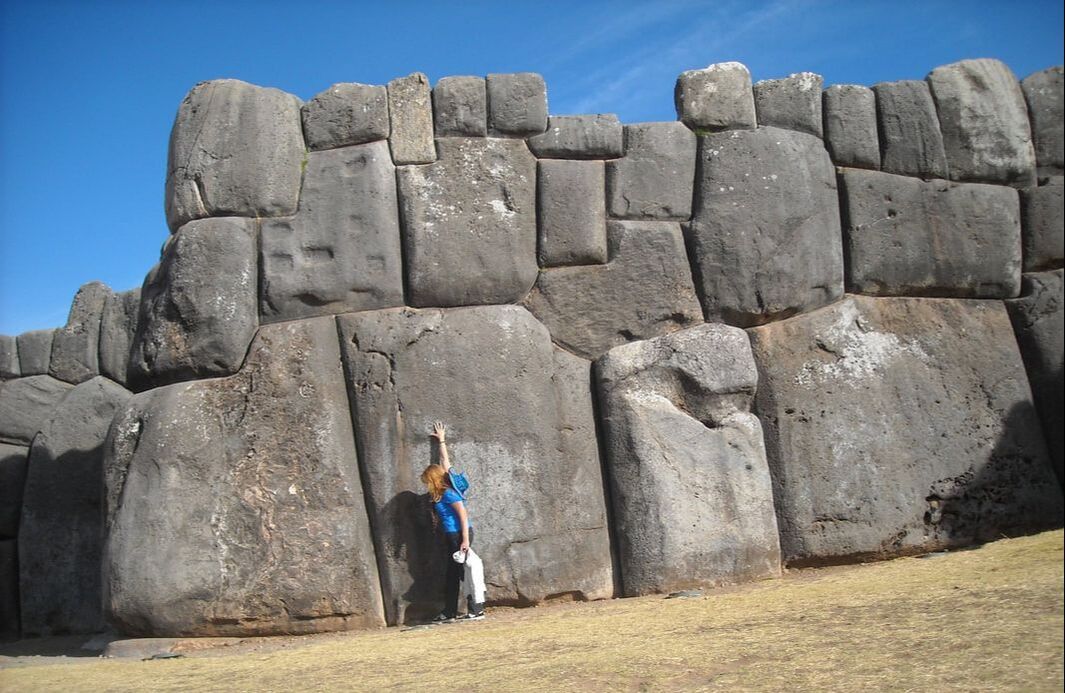|
When you look at the constructions of ancient civilizations, it is hard to believe that they were created thousands of years ago, since even modern processing tools cannot always cope with such tasks. Sacsayhuaman is a megalithic temple complex located on the northern outskirts of the city of Cusco in Peru. This is the most incredible monument of architecture, inherited from the civilization that preceded the Incas. The stonewalls of Sacsayhuaman are huge and made up of blocks weighing more than 50 tons, fitted to each other so tightly that it seems as if they were fused together. It is impossible to push even a sheet of the thinnest paper between them. As if an unknown giant bent and molded them like clay. Often, the walls are stones of various geometric shapes and sizes (some of them have 12 or more faces), which are very aesthetically collected, with smooth surfaces, precision, and faired interceptions. The same rounded corners can be seen in other ancient sites all over the world, for example, in Egypt. As to Egypt, there has always been a theory of the pyramids’ origin. When we learn that no Egyptian hieroglyphs have been found in the Great Pyramid nor any evidence of the pharaoh’s burial, the theory of pyramids being adopted by the Egyptians just strengthens. Also, the Great Pyramid is the only pyramid on our planet that has eight sides and not four. Each of the pyramid’s four sides is precisely split from the apex to the base with very subtle concave indentations, which can be seen clearly from the air. Here, surface blocks identical to those in Cusco, Peru can be found, with unusually shaped nodules protruding from them. Researches suggested that the nodules may have been used to move the stone blocks, however, archaeologists did not approve this theory. Archaeologists and experts in the field of architecture and construction rack their brains over these questions: how did the ancient stone cutters achieve similar precision in processing and how did they manage to drag very heavy stones and put them in place? Moreover, what tools and devices did they use? Puma Punku, Ollantaytambo, Stonehenge, Pyramids of Egypt, Maeshowe neolithic grave — this is not a complete list. There are hundreds of such structures. According to a number of researchers, such as Christopher Jordan and Jesús Gamarra, the ancient civilizations of Peru and Bolivia had a secret technology that allowed them to soften stones. Legends speak of the liquid, derived from plants, which was known to the ancients, to turn the stones soft. Apart from huge stones being cut, there is evidence of drill and boreholes. The pentagonal boreholes of Massachusetts and the star holes of Norway clearly show evidence of machine marks. Science is yet to find some clarifications. The only explanation of how ancient civilizations manage to process rocks so expertly is the theory that they somehow knew how to soften the stones. The scholars of the world continued to tell us that these great monoliths were processed by copper or brass tools, which is nearly impossible to believe. “For me, archaeology is not a source of illustrations for written texts, but an independent source of historical information, with no less value and importance, sometimes more importance, that the written sources.” Michael Rostovtzeff
0 Comments
Leave a Reply. |
AuthorPhoenix Voyagers Archives
January 2023
Categories |
|




 RSS Feed
RSS Feed




